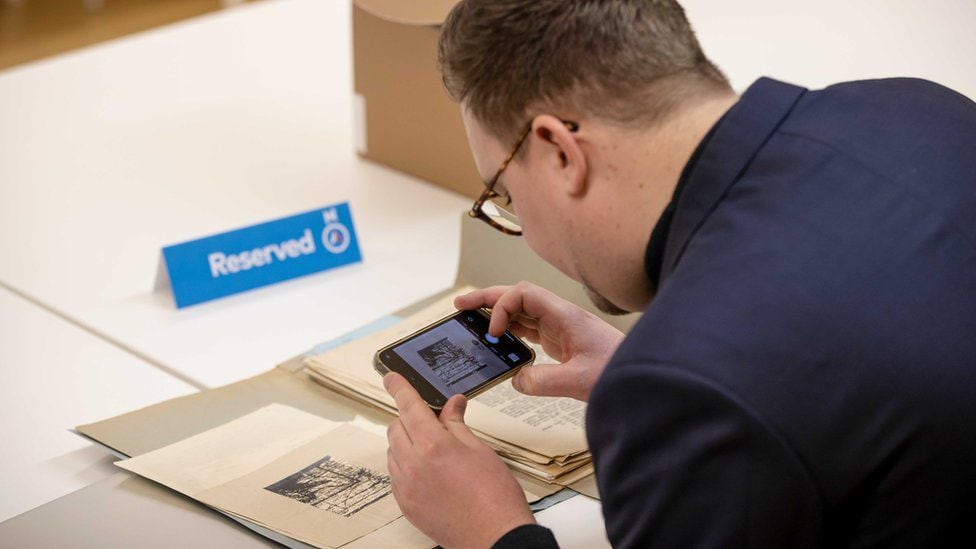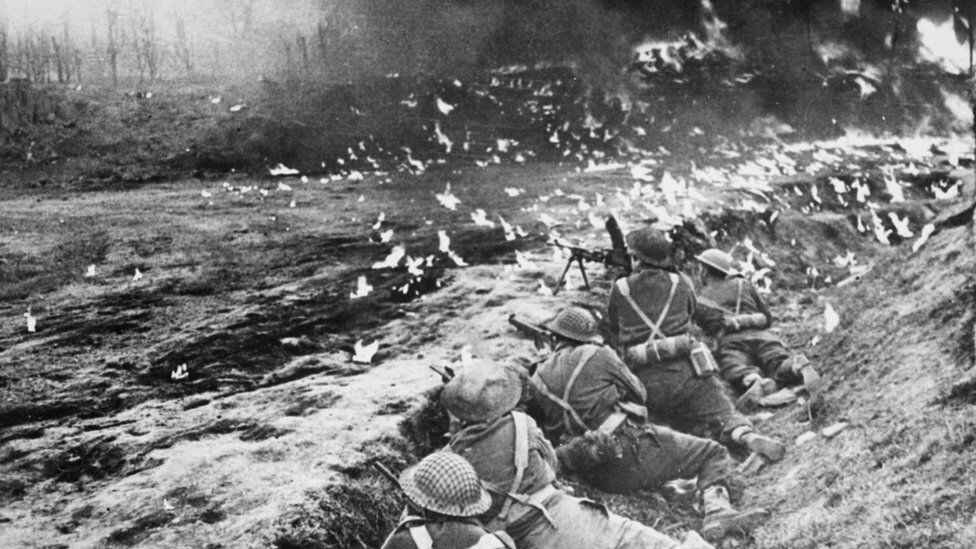The publication of an old map has led many Dutch people to search for Nazi treasure supposedly hidden near the German border at the end of the WWII.
In the small town of Ommeren, in the southeast of the Netherlands, treasure hunters from all over the country have been digging for the treasure supposedly hidden there since last weekend. It is said that German soldiers buried in that place, at the end of World War II, four boxes full of jewels, coins and jewelry at the foot of three poplars.
Look: The story of a Holocaust survivor that lives on in a book written by his granddaughter
The madness broke out after the National Archives of the Netherlands published last week the sketch of the hideout, about 80 years old, with all the file of the curious case. The map quickly spread among treasure hunters.
“This is a genuine treasure map, from the archives of the Netherlands Institute of Management, containing clues to a never-found Nazi treasure supposedly buried near Ommeren. It has been searched several times to no avail,” they wrote. at the beginning of January those responsible for publicizing the new documents that could be consulted from now on totally free.
Origin of the supposed treasure
The “treasure” is believed to have come from a bank in Arnhem, in the eastern Netherlands.
German Helmut Sonder testified in 1946 that he had found the jewels with three comrades after an Arnhem bank branch suffered an air raid in 1944 in which a safe was also destroyed. The content: gold, diamonds, jewels, music boxes, coins. Possibly worth several million euros, the National Archive suspects.
The hoard is believed to have been worth at least 2-3 million Dutch guilders in 1945, the equivalent of about $18.4 million.
Sonder, who was stationed in Arnhem at the time, said he and his comrades took the valuable loot and hid it in ammunition boxes, later burying them in the spring of 1945 as the Allies were about to liberate the city.
The valuable cargo was buried in the roots of a poplar tree, 70-80 cm deep, just outside the town of Ommeren, about 40 km from Arnhem.

Doubts of historians
Several searches carried out by the Dutch authorities in 1946 and 1947 were unsuccessful, according to what Anne-Marieke Samson, a spokeswoman for the Dutch National Archives, told the Reuters news agency.
At that time Sonder was hired to lead the search, since two of his companions did not survive and there is no trace of the third. On June 22, 1947, he himself dug the shovel into the dirt near the poplars, but found nothing but dirt.
He himself suspected that his former first sergeant had secretly returned and dug up the treasure. But the international search was unsuccessful.
Archive experts aren’t sure who made the map, but they think it was one of the German soldiers. After Sonder handed it over, the map went to the Beheersinstituut archive, on the condition that it not be published for many years to protect the financial interests of the owners.
Historians and also authorities they doubt that the jewels are in Ommeren. Above all, because no one had reported the loss of jewelry in almost 80 years.

No search with metal detectors
Metal detectors may not be used for safety, but that doesn’t stop hobbyist treasure hunters. And not even the fact that the landscape now looks completely different. The three poplars are no longer there.
The police have already warned that digging and searching with metal detectors is prohibited in this Dutch municipality. Treasure hunters might stumble upon something else entirely like old bombs or land mines that were buried by the Germans in Ommeren during World War II.

Experts have also pointed out that the area is close to the front line of World War II. Therefore, the search at this location is extremely dangerous due to possible unexploded ordnance. In addition, the Monuments Law prohibits archaeological excavations. For this, strict rules apply.
According to a municipal spokesman, treasure hunters have been digging on private property, although police have issued no fines, only warnings to leave the area. The owner of a private land located a man up to his chest in a hole that he had dug himself in search of the treasure, according to local press.
Nazi treasures
It is not the first time that a new document unleashes the fever of treasure hunters to find some of the treasures hidden by the Nazis during World War II. It is well known that during the war the Nazi army not only managed to seize large amounts of gold, but also stole a large number of pieces of art. Many of which have yet to appear.
It is estimated that the Nazi army was able to steal some 5 million works of artobtained both from museums and from private collections, especially those held by Jews.
In 2020, a Nazi diary written by an SS officer for Adolf Hitler, which had remained secret for more than 75 years, was released, listing up to 11 places inside Poland where the Nazis would have hidden treasures. obtained during their looting and robbery.
The diary was in the hands of a Masonic lodge to which the officer belonged until it was delivered in 2019 to a Polish foundation as an apology for what happened during World War II.
Source: Elcomercio
I am Jack Morton and I work in 24 News Recorder. I mostly cover world news and I have also authored 24 news recorder. I find this work highly interesting and it allows me to keep up with current events happening around the world.

:quality(75)/cloudfront-us-east-1.images.arcpublishing.com/elcomercio/UESRZMJD6BGCLKFFVMTJPCERVU.jpg)

:quality(75)/cloudfront-us-east-1.images.arcpublishing.com/elcomercio/3677ZW4ZQNA2TNXY3B27HHRSR4.png)

:quality(75)/cloudfront-us-east-1.images.arcpublishing.com/elcomercio/MKLMHX6SS5DYRBFHLLSIWVRXQQ.jpg)
:quality(75)/cloudfront-us-east-1.images.arcpublishing.com/elcomercio/QGEIVSPKINHZBGTYJSBPVB6LWA.jpg)
